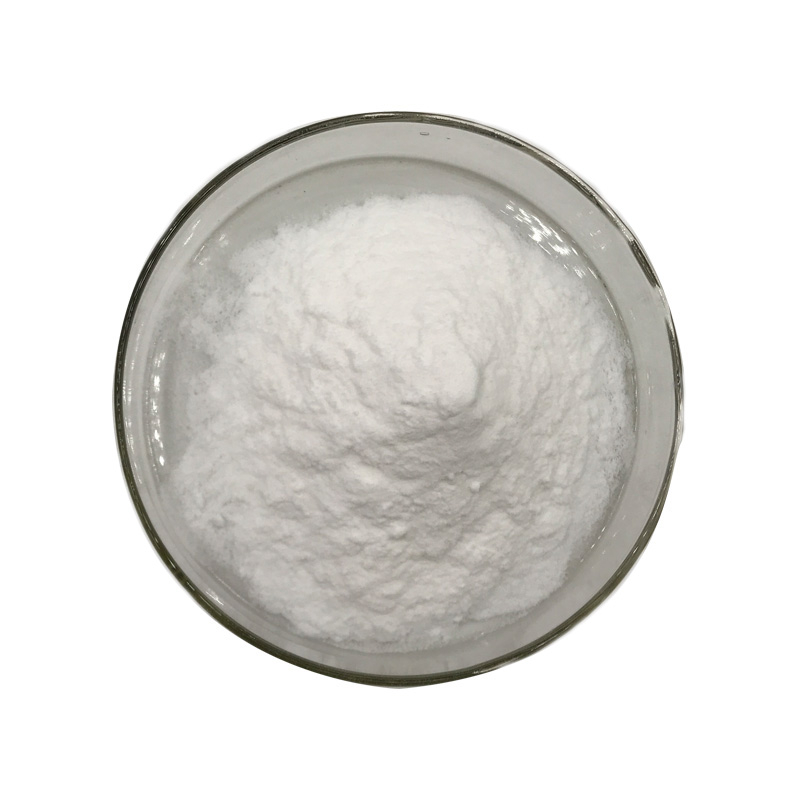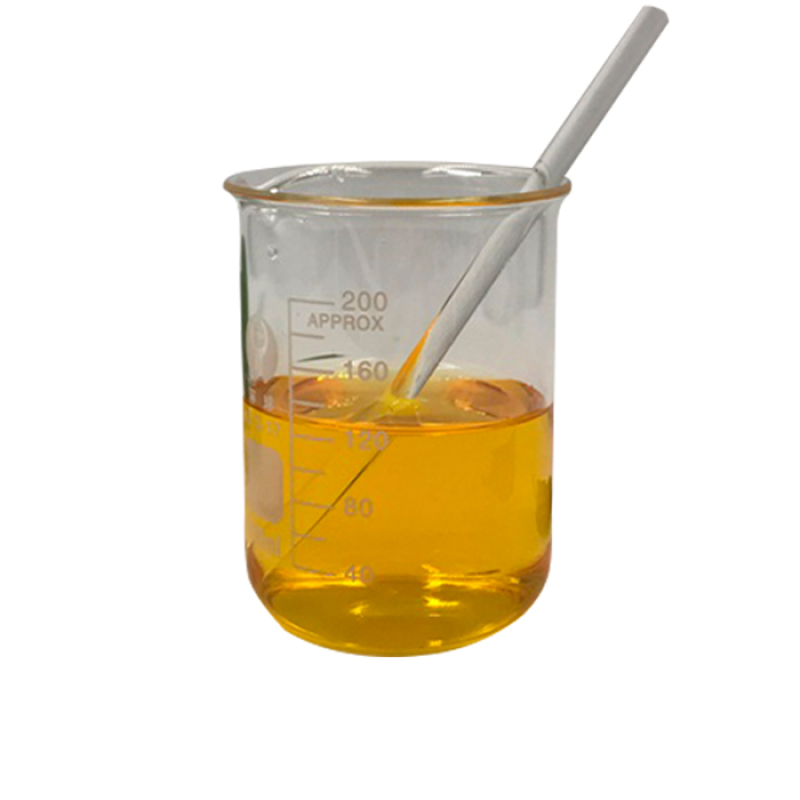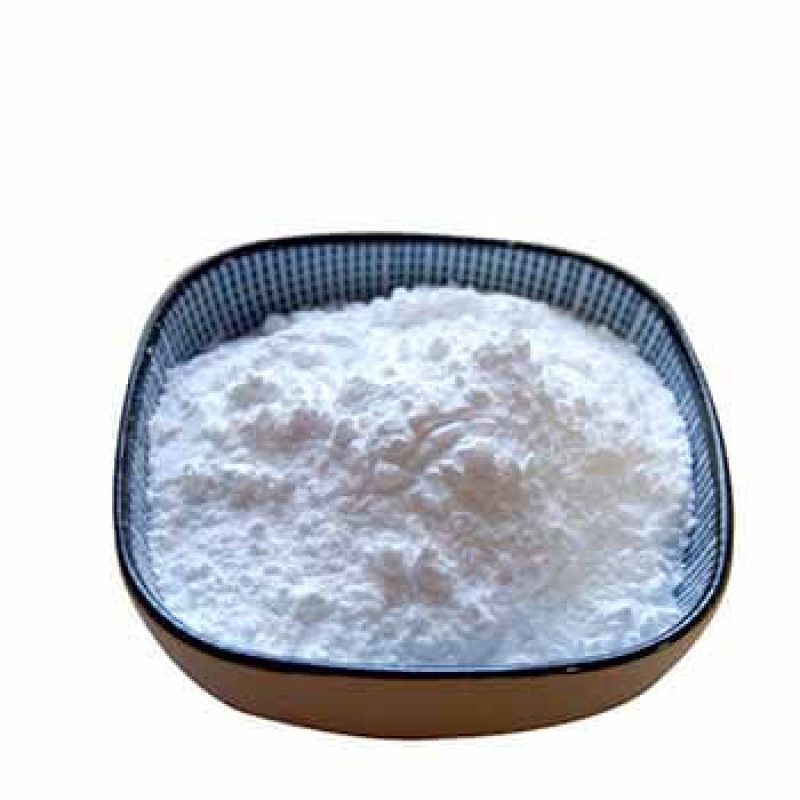Products Description of Kojic acid CAS#501-30-4Kojic acid, also known as kojic acid and kojic acid, is an organic acid with antibacterial effect produced by aerobic fermentation of glucose by Aspergillus candida at 30-32°C. Its molecular structure is a γ-pyrone with a substituent. Among the γ-pyrone compounds existing in nature, the only famous compounds are kojic acid and maltol. In 1907, Saito separated kojic acid crystals from rice koji. It was named by Yabuta in 1912 and its structure was determined in 1924.
Contact Now
Products Description of Glutaraldehyde CAS#111-30-8Glutaraldehyde is an important saturated straight-chain fatty dialdehyde. Although there are many reports on the toxicity of glutaraldehyde, the cross-linking of glutaraldehyde has many advantages and has been accepted in clinical applications.
Contact Now
Products Description of 4-AminophenolCAS#123-30-8Aminophenol is also known as hydroxyaniline and aminohydroxybenzene. There are three isomers, namely o-aminophenol, m-aminophenol and p-aminophenol (4-aminophenol). In 1874, Baeyer et al. first prepared p-aminophenol. Due to the different relative positions of the hydroxyl group and the amino group, the three are also different in terms of physical and chemical properties. This product is weakly alkaline, weakly acidic and strongly reducing. Because it has both amino and phenol groups, it has the common properties of both.
Contact Now
Products Description of 2-Mercaptobenzothiazole CAS#149-30-4Pale yellow monoclinic needles or flaky crystals with an unpleasant odor.
Contact Now
l-Glutamic acid, N-coco acyl derivs., disodium salts Chemical Propertiesdensity 1.318[at 20℃]vapor pressure 0Pa at 20℃pka1.52[at 20 ℃]Water Solubility 450g/L at 20℃LogP-4.48 at 20℃EPA Substance Registry SystemL-Glutamic acid, N-coco acyl derivs., disodium salts (68187-30-4)Factory and Equipment ShowFast delivery timeInventory 2-3 working days New production 7-10 working days
Contact Now
Products Description of L-Arginine L-glutamate CAS#4320-30-3 White powder; Odorless or slightly odorous; with a special taste. Decomposes when heated to 193-194.6℃. 100ml. 25% aqueous solution contains 13.5g of arginine and 11.5g of glutamic acid.
Contact Now
Products Description of 2-(4-FLUORO-PHENYL)-PIPERAZINE CAS#65709-33-32-(4-Fluorophenyl)-piperazine is a common pharmaceutical intermediate.2-(4-FLUORO-PHENYL)-PIPERAZINE CAS#65709-33-3 Chemical PropertiesMelting point 111-114°CBoiling point 287.2±35.0 °C(Predicted)density 1.079±0.06 g/cm3(Predicted)storage temp. 2-8°Csolubility DMF: 30 mg/ml; DMF:PBS(pH7.2) (1:2): 0.33 mg/ml; DMSO: 30 mg/ml; Ethanol: 30 mg/mlform A crystalline solidpka8.76±0.40(Predicted)Safety Information HS Code 2933599590Product Application of 2-(4-FLUORO-PHENYL)-PIPERA
Contact Now
O-(Tetrahydro-2H-pyran-2-yl)hydroxylamine CAS#6723-30-4O-(Tetrahydro-2H-pyran-2-yl)hydroxylamine Chemical PropertiesMelting point 34-37 °C (lit.)Boiling point 81 °C/20 mmHg (lit.)density 1.1274 (rough estimate)refractive index 1.4206 (estimate)Fp 180 °Fstorage temp. Keep in dark place,Inert atmosphere,Store in freezer, under -20°Csolubility DMSO (Slightly), Methanol (Slightly)pka3.28±0.20(Predicted)form Low Melting Solidcolor WhiteSafety InformationHazard Codes XiRisk Statements 36/37/38Safety Statements 26-36WGK Germany 3HS
Contact Now
Products Description of SODIUM TRISILICATE CAS#13870-30-9Sodium silicate is a water-soluble silicate, which can be divided into three forms: solid, liquid, and water-quenched. In theory, this type of substance is called "colloid". Industrial solid sodium silicate is a colorless, slightly light blue, turquoise, sky blue or yellow-green transparent or translucent glass block. When the impurity content is very low, the glassy anhydrous solid sodium silicate is a colorless and transparent glass body, and pure solid sodium cinnamate is a colorless and transparent solid.
Contact Now
Products Description of ForchlorfenuronCAS#68157-60-8Chloropyridin-4-yl [1-(2-chloropyridin-4-yl)-3-phenylurea, CPPU], also known as chlorpyrifos and KT-30, is a plant growth regulator of the cytokinin class. It has the effects of inducing callus growth and promoting bud development before harvest. After harvest, it has a significant effect on controlling post-harvest leaf yellowing and post-harvest diseases of various fruits and vegetables.
Contact Now
Dodecyltrimethylammonium Bromide Chemical PropertiesMelting point 246 °C (dec.)(lit.)density 1.1566 (rough estimate)vapor pressure 0Pa at 20℃refractive index 1.5260 (estimate)Fp 246°Cstorage temp. Store below +30°C.solubility H2O: 0.1 M at 20 °C, clear, colorlessform Powdercolor White to slightly yellowWater Solubility solubleSensitive Hygroscopicλmaxλ: 240 nm Amax: ≤0.2λ: 250 nm Amax: ≤0.03λ: 260 nm Amax: ≤0.02λ: 500 nm Amax: ≤0.02BRN 3597463InChIKeyXJWSAJYUBXQQDR-UHFFFAOYSA-MCAS DataBase Reference1119-94-4(
Contact Now
Products Description of N,N'-Ethylenebis(stearamide) CAS#110-30-5N,N'-(ethane-1,2-diyl)distearamide is a colorless to light yellow waxy solid. It has good thermal stability and low volatility.
Contact Now
Products Description of Octadecanethiol CAS#2885-00-9Octadecanethiol, molecular formula C18H38S.Octadecanethiol Chemical PropertiesMelting point 30-33 °C(lit.)Boiling point 204-210 °C11 mm Hg(lit.)density 0.847 g/mL at 25 °C(lit.)vapor pressure <0.5 hPa (20 °C)refractive index n20/D 1.3610Fp 55 °Fstorage temp. Store below +30°C.form Crystalline Solidpka10.49±0.10(Predicted)Specific Gravity0.832 (30℃)0.847color WhiteWater Solubility InsolubleBRN 1811934Exposure limitsNIOSH: Ceiling 0.5 ppm(5.9
Contact Now
Products Description of Cadmium oxide CAS#1306-19-0Cadmium oxide is an oxide of cadmium with the molecular formula CdO, which is carcinogenic. Cadmium oxide can dissolve in acid to form Cd[H2O]62+; it can also dissolve in alkali to form [Cd(OH)4]2??.Cadmium oxide Chemical PropertiesMelting point 900°CBoiling point 1385 °Cdensity 8.15 g/mL at 25 °C(lit.)storage temp. Store below +30°C.solubility 0.0021g/lform powdercolor brownSpecific Gravity8.15OdorOdorlessPH9-10 (H2O)(aqueous suspension)Water Solubility insoluble.
Contact Now
Products Description of HYDROXYLAMINE CAS#7803-49-8Hydroxylamine is also called "hydroxylamine". Chemical formula NH2OH. Molecular weight 33.03. Unstable white large flake or needle-shaped crystals. Very easy to absorb moisture, volatile, very soluble in water. Deliquesce in the air. Odorless, corrosive to the skin. When the concentration is 100%, 10%, 20%, 30%, 40%, 50%, the relative density of the aqueous solution is: 1.2040, 1.0192, 1.0410, 1.0637, 1.0875, 1.1122. The product decomposes in hot water and is slightly soluble in ether, benzene, carbon disulfide, and chloroform.
Contact Now
Products Description of PRL-8-53 CAS#51352-87-5White crystal powderPRL-8-53 Chemical Propertiesstorage temp. under inert gas (nitrogen or Argon) at 2-8°Csolubility DMF: 30 mg/ml DMSO: 30 mg/ml Ethanol: 30 mg/ml PBS (pH 7.2): 10 mg/mlform A crystalline solidInChIInChI=1S/C18H21NO2.ClH/c1-19(14-16-7-4-3-5-8-16)12-11-15-9-6-10-17(13-15)18(20)21-2;/h3-10,13H,11-12,14H2,1-2H3;1HInChIKeyHLBBSWSJLPLPRU-UHFFFAOYSA-NSMILESC(OC)(=O)C1=CC=CC(CCN(CC2=CC=CC=C2)C)=C1.[H]ClFactory and Equipment ShowFast delivery timeInventory 2-3 working days New production 7-10 working days
Contact Now
Products Description of 4-Methylbenzenesulfonhydrazide CAS#1576-35-8p-Toluenesulfonylhydrazine, also known as 4-methylbenzenesulfonylhydrazine, is a white crystalline powder, easily soluble in alkali, soluble in methanol, ethanol and butanone, slightly soluble in water and aldehydes, and insoluble in benzene and toluene. It is used as a foaming agent for natural rubber, synthetic rubber and a variety of plastics, making plastics and rubber products have fine closed-cell structures, small shrinkage and high tear strength.
Contact Now
Products Description of 4-Hydroxycoumarin CAS#1076-38-64-Hydroxycoumarin is a coumarin derivative, one of the most versatile heterocyclic scaffolds, commonly used in the synthesis of various organic compounds. 4-Hydroxycoumarin has electrophilic and nucleophilic properties. 4-Hydroxycoumarin appears as slightly yellow needle-shaped crystals.
Contact Now
Products Description of Mogroside V CAS#88901-36-4 Mogroside V is extracted from a plant called Momordica grosvenori. Momordica grosvenori is a vine plant of the Cucurbitaceae family (Mogrosvenori genus). The mature fruit of Momordica grosvenori is extremely sweet and is rich in cucurbitane-type tetracyclic triterpenoid saponins, among which Mogroside V is the main sweet component, with a dry weight content of up to 1.6%.
Contact Now
Products Description of Hydroxychloroquine sulfate CAS#747-36-4Hydroxychloroquine sulfate is an antimalarial drug that also has anti-inflammatory, immunomodulatory and anticoagulant effects. Currently, hydroxychloroquine is mainly used in the treatment of rheumatoid arthritis, juvenile chronic arthritis, discoid lupus erythematosus and systemic lupus erythematosus, but the clinical effect is slow, often requiring 2 to 4 months. The pharmacological action of this drug is not very clear.
Contact Now
Dimethylolurea Chemical PropertiesMelting point 125 °C (dec.)(lit.)Boiling point 224.08°C (rough estimate)density 1.34refractive index 1.4610 (estimate)Fp 100 °Cstorage temp. 2-8°Cpka12.14±0.46(Predicted)form powder to crystalcolor White to Almost whiteWater Solubility 150 g/LMerck 14,6968BRN 1811870InChIKeyQUBQYFYWUJJAAK-UHFFFAOYSA-NLogP-2.610 (est)CAS DataBase Reference140-95-4(CAS DataBase Reference)NIST Chemistry ReferenceDimethanolurea(140-95-4)EPA Substance Registry SystemDimethylolurea (140-95-4) Safety InformationHaz
Contact Now
Products Description of SCLEROGLUCAN CAS#39464-87-4Scleroglucan is a non-ionic water-soluble homopolysaccharide produced by filamentous fungi.
Contact Now
Products Description of 4-morpholinecarbaldehyde CAS#4394-85-8N-formylmorpholine (NFM) is an important organic solvent and fine chemical raw material. It is a colorless transparent liquid at room temperature. It has the chemical properties of amides.
Contact Now
Products Description of 4'-HydroxyacetophenoneCAS#99-93-4Since p-hydroxyacetophenone contains hydroxyl and ketone groups on the benzene ring in its molecule, it is often used as an intermediate in organic synthesis to react with other compounds to synthesize many important substances.
Contact Now


































